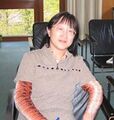Template:On This Day (nonfiction)/March 18: Difference between revisions
(Created page with "<gallery> || *** DONE: Pics *** ||1314: Jacques de Molay, the 23rd and final Grand Master of the Knights Templar, is burned at the stake. Pic. ||1602: Jacques de Billy born...") |
No edit summary |
||
| Line 15: | Line 15: | ||
||1796: Jakob Steiner born ... mathematician who worked primarily in geometry. Pic. | ||1796: Jakob Steiner born ... mathematician who worked primarily in geometry. Pic. | ||
||1798: Mineralogist Gustavus ("Gustav") Rose born - made important contributions in the fields of petrology and crystallography, and is credited for pioneering usage of the reflective goniometer in Germany. He had a particular interest in the relationship between the crystalline form and the physical properties of minerals. He is credited for developing a mineral system that was a combination of chemistry, isomorphy and morphology. Identified perovskite. Pic. | |||
||1839: Joseph-Émile Barbier born ... astronomer and mathematician, known for Barbier's theorem on the perimeter of curves of constant width. Pic search. | ||1839: Joseph-Émile Barbier born ... astronomer and mathematician, known for Barbier's theorem on the perimeter of curves of constant width. Pic search. | ||
Latest revision as of 05:53, 30 April 2022
1640: Painter, mathematician, astronomer, and architect Philippe de La Hire born. La Hire will be the favorite pupil of Desargues, and develop conic sections and epicycloids based on the teaching of Desargues.
1727: Scientist and watchmaker Ferdinand Berthoud born. Berthoud will serve as Horologist-Mechanic by appointment to the King and the Navy, leaving an exceptionally broad body of work, notable for excellent sea chronometers.
1871: Mathematician and academic Augustus De Morgan dies. De Morgan formulated two laws, now De Morgan's Laws, pertaining to mathematical induction: (1) the negation of a disjunction is the conjunction of the negations; (2) the negation of a conjunction is the disjunction of the negations.
1927: Physicist, mathematician, and activist William C. Davidon born. Davidon will develop the first quasi-Newton algorithm, now known as the Davidon–Fletcher–Powell formula.
1927: Journalist, writer, literary editor, and actor George Plimpton born. Plimpton will be famous for "participatory journalism": competing in professional sporting events, playing with the New York Philharmonic Orchestra, performing a circus trapeze act, and then recording the experience from the point of view of an amateur.
1963: Mathematician Tan Lei born. Tan Lei will specialize in complex dynamics and functions of complex numbers, making contributions to the study of the Mandelbrot set and Julia set.





